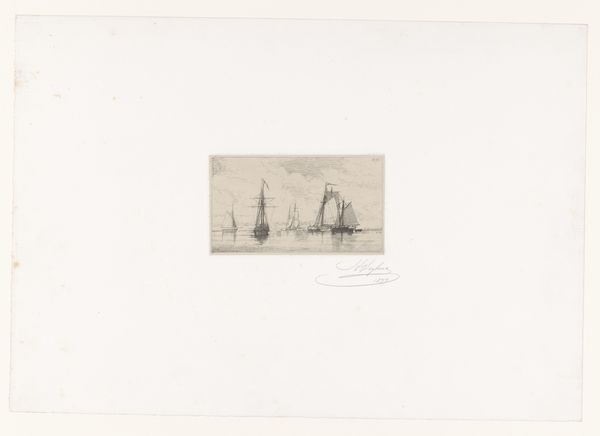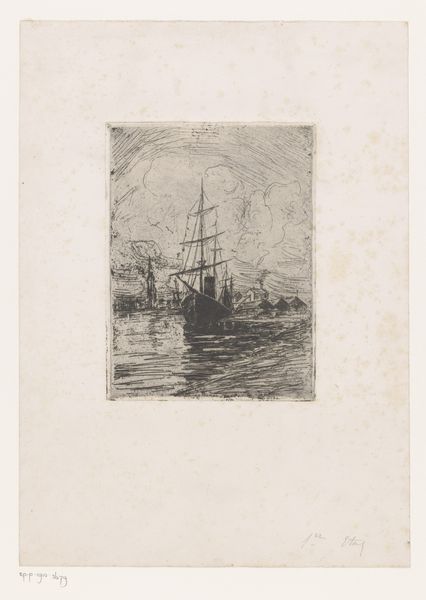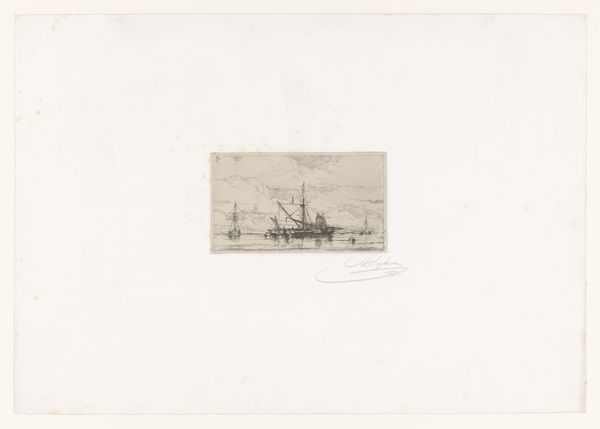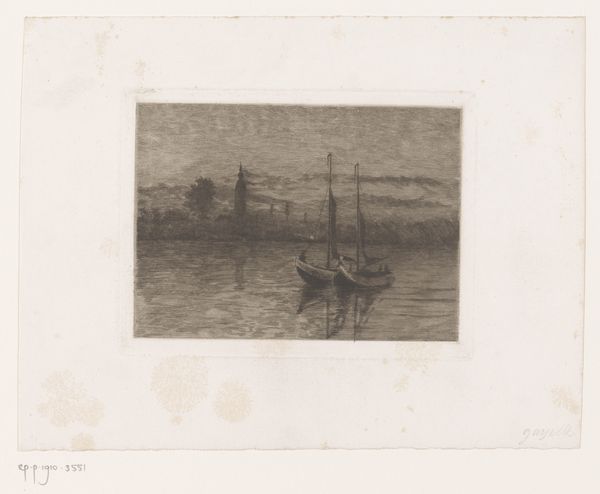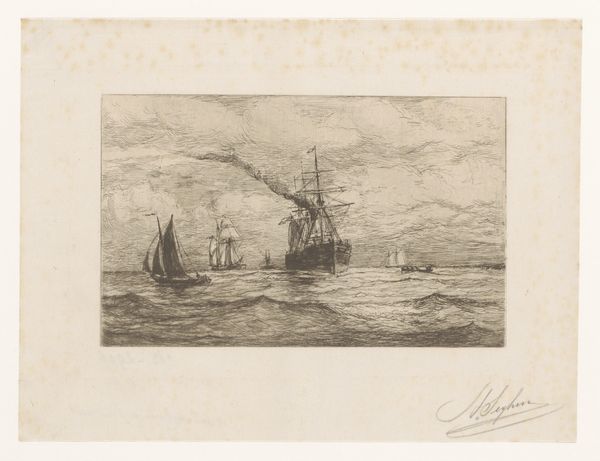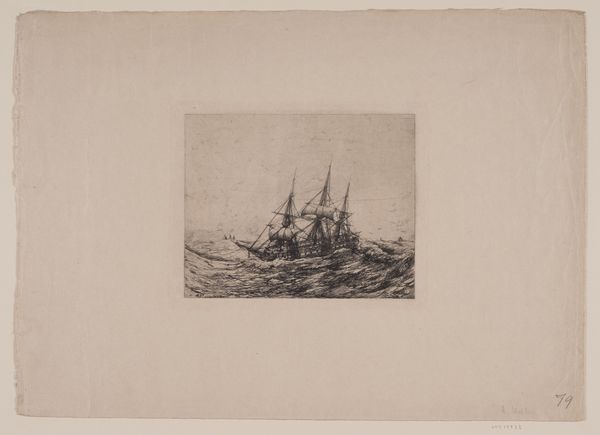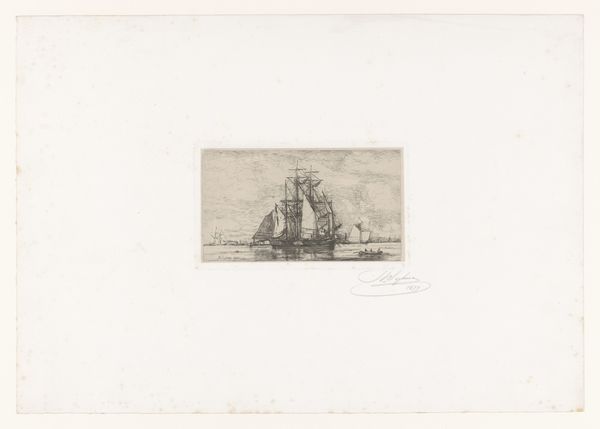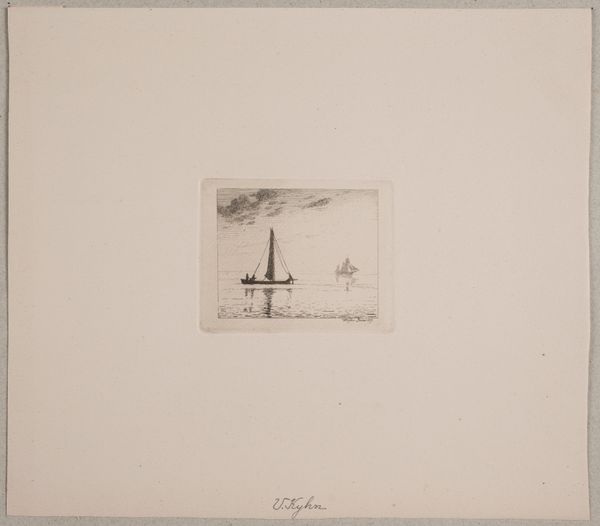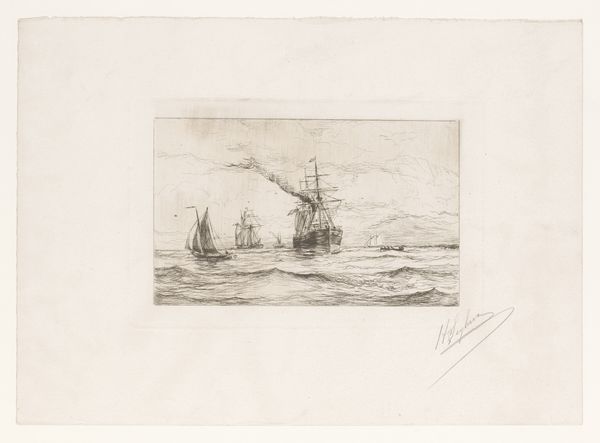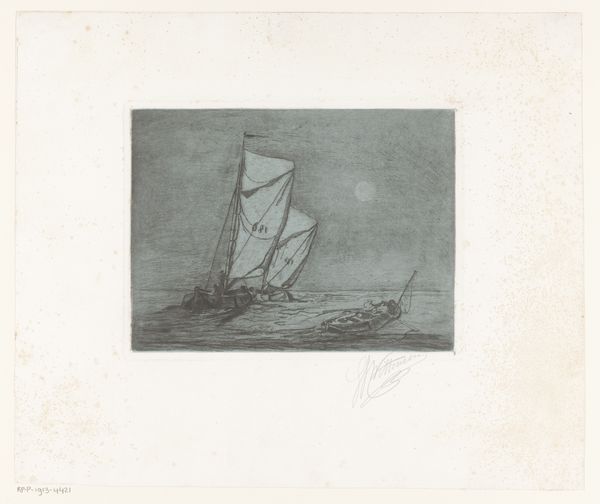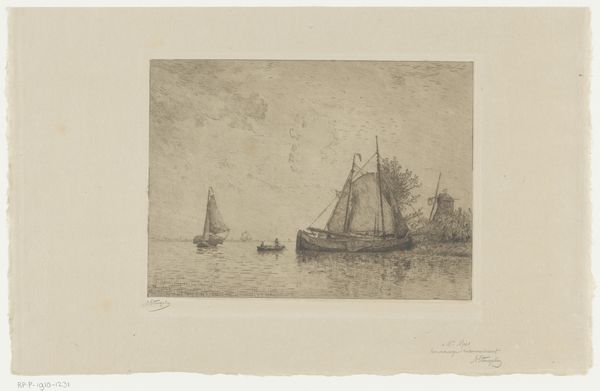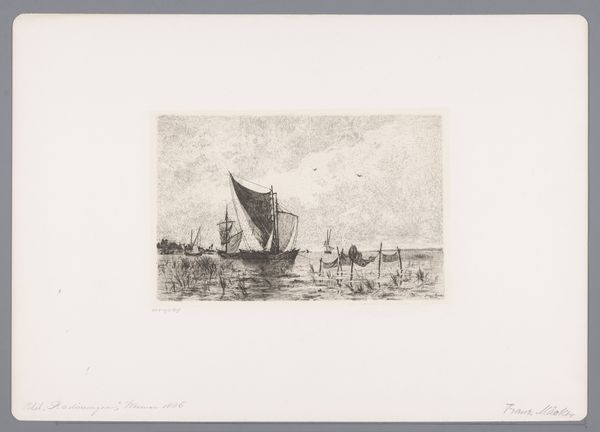
print, etching
# print
#
etching
#
landscape
#
form
#
line
#
cityscape
#
realism
Dimensions: height 94 mm, width 105 mm
Copyright: Rijks Museum: Open Domain
Curator: Welcome. We're standing before "View of the Port of Antwerp with Ships in the Foreground," an etching crafted by Robert Mols between 1858 and 1903. Editor: My first impression is one of bustling maritime activity, a glimpse into a bygone era of sailing vessels. There's something romantic and melancholy in the way the lines render the scene, though. Curator: Mols captured the essence of Antwerp's harbor during its peak as a major European port. It’s interesting to think about the city as a point of transfer of resources from colonized spaces. The etching highlights the infrastructure and technology of global commerce. Editor: Indeed. And you know, viewing the cityscape beyond the ships—the buildings, what appears to be a cathedral—it also reads as a commentary on the simultaneous rise of industry, of the port cities, as the ships moved further. Consider what was carried in those ships; people, cargo, ideas. These themes, unfortunately, involve darker truths concerning race, gender, and wealth. Curator: Right. The etcher's technique enhances this interplay of progress and potential unease. The use of line, particularly, renders the ships almost ghostly against the sky, which infuses it all with tension. Mols seems aware of both the aesthetic and societal weight of the scene. Editor: Absolutely, and there is a visual texture here worth considering. What might otherwise seem like simple strokes, considered under a theoretical lens, invite us to contemplate not just trade itself, but what that trade represents culturally, economically, even spiritually, at this pivotal stage in modernity. Curator: Looking at the lines, which define not just form but also depth, it’s clear that he wanted us to be pulled into this world. We see a very particular kind of bustling life but it may come with hidden violence of its own. Editor: I find myself pondering this artist's social standing and what communities are centered in this picture versus marginalized or erased within it. How can this historical image, from today’s vantage, reveal these hidden facets for viewers? Curator: Food for thought, absolutely. I see now how the artistic choice can encourage dialogue beyond art history and extend to social structures. Thank you for sharing your insights. Editor: It’s been a productive conversation. Hopefully we can provide meaningful frames for visitors today.
Comments
No comments
Be the first to comment and join the conversation on the ultimate creative platform.
